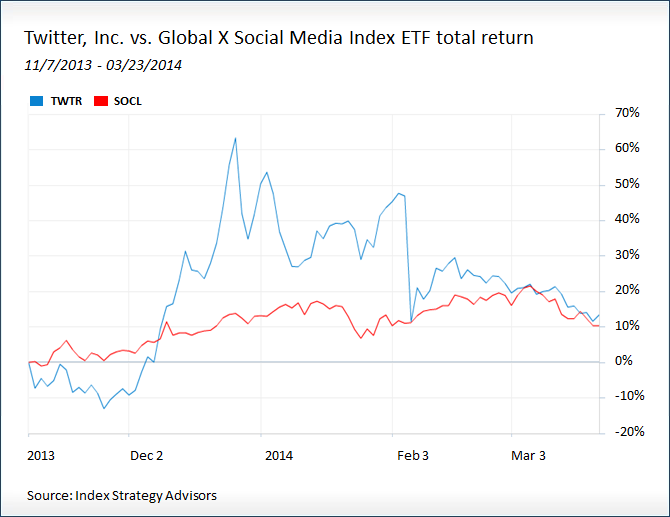IPO Investing Made Easy ETF Trading Research
Post on: 18 Июнь, 2015 No Comment

There’s no doubt that investing in a stock’s initial public offering, or IPO, can be very financially rewarding.
With so many IPOs these days, it’s difficult for regular investors to spend the time needed to identify good companies and avoid the bad ones.
And the task of researching IPOs is made more difficult by the SEC. Any investment bank that takes a company public isn’t allowed to issue any research on the company for a period of time after the company becomes public.
It’s even more difficult for ETF investors to get in on the early stages because indexes are slow to include newly public stocks. It’s not uncommon for months to pass until a new company is added to an index and included in an ETF.
It’s no surprise that ETF providers have created new ETFs to bridge the gap between the time a stock IPOs and when it is included in a traditional index.
Last year Renaissance Capital launched the Renaissance IPO ETF (IPO ). This ETF provides investors with a way to tap into a portfolio of newly public companies before they’re included in most ETFs.
In fact, new companies are included in the index on a fast entry basis on the fifth day of trading, or upon quarterly review, and are removed after two years when the IPOs become seasoned stocks.
But not every new IPO makes the cut… the ETF only includes the most economically significant newly public companies. The index is designed by Renaissance Capital research to hold the largest, most liquid newly-listed US IPOs.
Over the last year, IPO is up 10.0%. That’s not quite as good as the S&P 500 that’s up 13.4%, but it’s running well ahead of the Russell 2000 small-cap index that’s only up 1.4% over the last year.
Right now, IPO has 74 holdings. But a third of the ETF is invested in the top four holdings… Alibaba (BABA ) 10.0%, Twitter (TWTR ) 9.6%, Zoetis (ZTS ) 9.1%, and Workday (WDAY ) 4.1%.
It’s important to remember that this ETF doesn’t have access to pre-IPO shares. This ETF is simply a way to get exposure to stocks that have recently had their initial public offering but are not yet included in a traditional index.
To be honest, I’m surprised that IPO has only accumulated $32 million in assets under management during its first year of existence. That’s next to nothing in the ETF business.
What’s more, IPO’s performance over the first year has been respectable given the weakness in small and mid cap stocks over the last year.
The one thing that makes IPO such an intriguing investment is that it comes with the built in IPO market expertise of Renaissance Capital. Long before they launched this ETF, the company has been specializing in pre-IPO fundamental analysis.
In other words, they do the research to figure if an IPO is a good investment or not before there’s a lot of information available.
Here’s the bottom line…
If you use an ETF like SPDR S&P 500 (SPY ) or the iShares Russell 2000 (IWM ) to invest in US stocks, you’re missing out on stocks that have recently had their IPO until they are included in the underlying index. And that often takes months or even longer…
Adding IPO to your portfolio is a simple way to systematically get exposure to stocks that have recently had their initial public offering.














